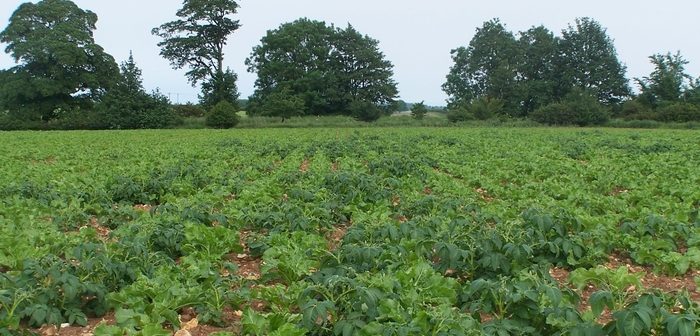Sugar beet is a very uncompetitive, slow growing crop, particularly during the first eight weeks of growth when weeds with a high biomass can establish and compete. These high biomass weeds, volunteer potatoes, sow thistle, spear thistle and creeping thistle, compete for water and nutrients, impede crop growth, create unwanted shade, block out sunlight and have a detrimental effect on yield. Research shows that 5 potato volunteers per square metre can result in yield loss of 16.5 t/ha of beet, as can act as a source of potato blight and Potato Cyst Nematodes (PCN). “Because there is a significant overlap between sugar beet and potato growing areas, beet will always run the risk of potato volunteers as a potential weed problem especially after mild winters where frost kill is minimal. Cara and Maris Piper are 2 popular potato varieties, which produce many tubers that become a volunteer potato problem, they account for nearly 20% of the potato area grown. Growers might need to think about prioritising these tall weeds in sugar beet,” according to John Sellars marketing specialist from Corteva.
With quotas abolished in 2017, growers strive for yield to optimize margins. In 2017/18 the national yield increased to 83.4 t/ha up from 79.8 t/ha in 2016/17. In-fact yields of sugar beet have gone up 25% in the last ten years and many growers are already achieving 100 t/ha plus, which is well above most other EU countries. “Both fixed and variable costs need to be reviewed in order to maximise margins.” Mr Sellars advises against trimming variable costs such as herbicide inputs as this may lead to a significant reduction in yield. He says it is important to apply the right herbicide early and often enough on the most competitive weeds, particularly those weeds that grow above the canopy. “It is widely documented that one tall weed per square metre can cost 11% of loss of yield. For the average crop this amounts to a loss of over 9 t/ha. So we need to deal with these tall weeds to make a significant difference to gross margins and shield your yield.”
“Dow Shield 400 (clopyralid) is the most important herbicide for reduction of volunteer potatoes in sugar beet. Best control is achieved by making the first 0.25L/ha application when emerging volunteer potatoes are 5-10cms tall, followed by another application at 0.25L/ha 7-10 days later.”
Another tall weed which is a real nuisance are thistles. Thistles interfere with harvest. Whilst their dense stands of tall sappy stems compete directly with the sugar beet. Just one creeping thistle stem per square metre can reduce beet yields by 1 t/ha and this weed is spreading. It can grow to over 90cms tall and has an extensive rooting system. Creeping thistles, spear thistles and sow-thistles are all controlled by Dow Shield 400 at 0.25L/ha applied to weeds at rosette stage followed by an application of 0.5L/ha 3-4 weeks later to complete creeping thistle control. Consider combining your first spray with a programme containing metamitron, this not only controls thistles but also boosts the performance of your programme against key annual weeds such as polygonums. In addition Dow Shield 400 will control corn marigold, groundsel, pineapple weed, scented mayweed, scentless mayweed, black-bindweed, pale persicaria and redshank. Its weed spectrum is a lot wider than many realise.




